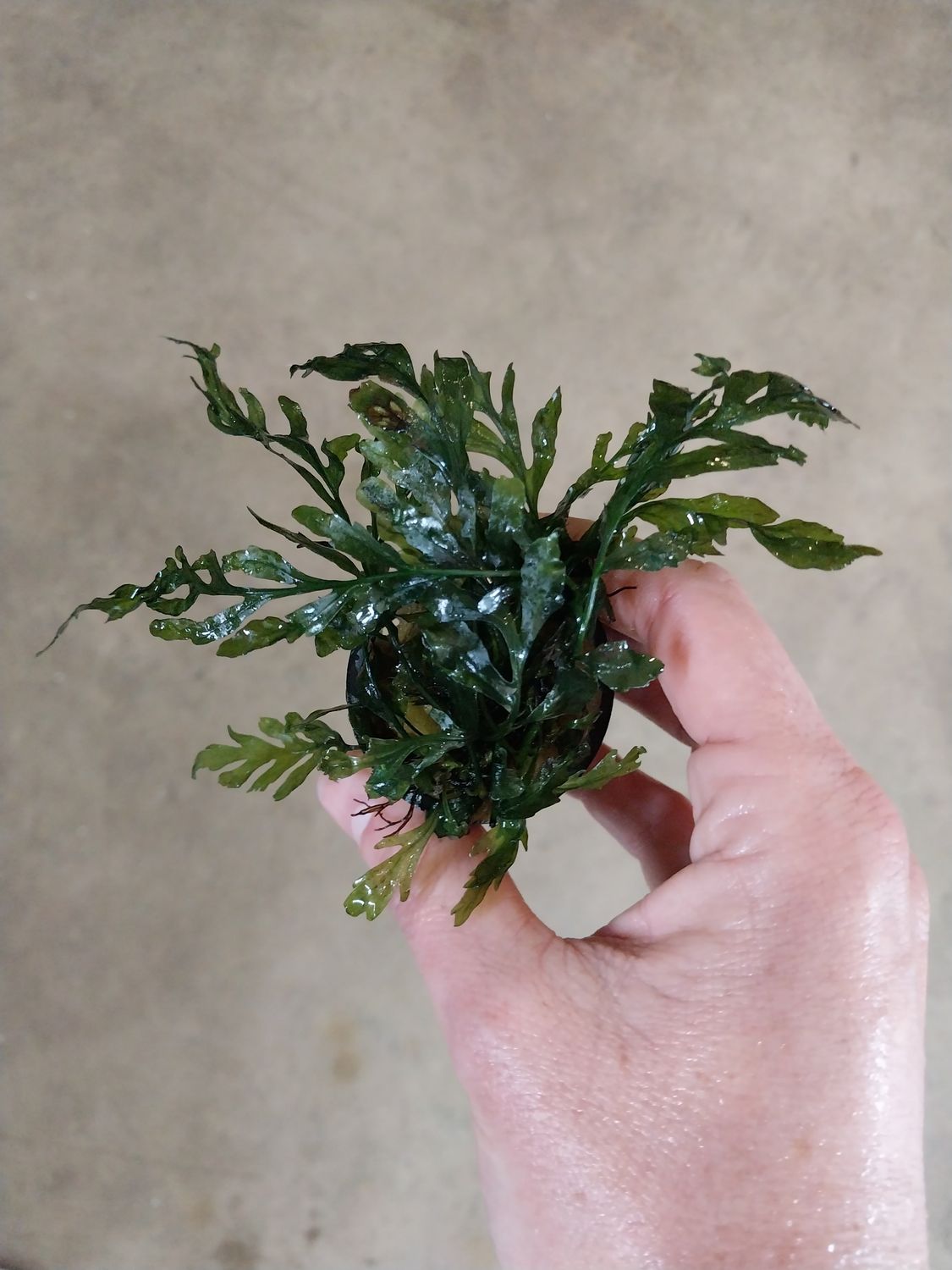Bolbitis heudelotii fern
Bolbitis heudelotii, commonly known as the African Water Fern, is a graceful, semi-aquatic fern prized for its delicate, lace-like green leaves and slow, elegant growth. Native to tropical West Africa, it thrives in freshwater aquariums with gentle flow and low to moderate lighting.
Here’s a detailed care guide:
Bolbitis heudelotii – Care Guide
Quick Facts
-
Common Names: African Water Fern, Congo Fern
-
Type: Rhizomatous aquatic fern
-
Growth Rate: Slow
-
Leaf Structure: Fine, translucent, dark green fronds
-
Size: 15–40 cm tall (can grow larger under ideal conditions)
-
Placement: Midground or background
-
Origin: Tropical West Africa
Water Parameters
-
Temperature: 22–28°C (72–82°F)
-
pH: 5.5–7.5 (prefers slightly acidic to neutral)
-
Water Hardness: Soft to moderately hard
-
CO₂: Optional, but enhances growth and leaf size
Lighting
-
Level: Low to moderate
-
Tips:
-
Avoid intense light—it may encourage algae on the leaves.
-
Works well in shaded or partially shaded areas of the tank.
-
Planting & Placement
-
Do NOT bury the rhizome—it will rot.
-
Best attached to:
-
Driftwood
-
Rocks
-
Cork bark (in paludariums or ripariums)
-
-
Attachment method: Fishing line, thread, or cyanoacrylate (gel-type) super glue
-
Spacing: Give room for fronds to spread and wave in current
Fertilization
-
Water column dosing: Important for healthy growth (especially potassium and micronutrients)
-
Substrate feeding: Not needed unless rooted into substrate
-
Iron: Can enhance deeper green coloration
-
CO₂ injection: Optional but beneficial—makes growth faster and fronds lusher
️ Water Flow
-
Moderate flow is ideal – helps keep the leaves clean and oxygenated
-
Avoid stagnant areas where detritus may collect on fronds
✂️ Maintenance & Propagation
-
Trimming: Remove yellow or decaying fronds at the base
-
Propagation: Divide the rhizome (make sure each portion has healthy fronds and roots)
-
Growth pattern: Horizontal rhizome creeps slowly across hardscape
⚠️ Common Problems
| Problem | Cause | Fix |
|---|---|---|
| Melting/frond loss | Transplant shock or drastic parameter change | Stable conditions; allow 1–2 weeks to adapt |
| Algae on fronds | Too much light or slow flow | Reduce light, increase flow, add algae grazers (e.g. Amano shrimp) |
| Rhizome rot | Buried in substrate or poor circulation | Keep rhizome exposed and ensure good flow |
Tank Compatibility
-
Safe for: Shrimp, snails, peaceful community fish
-
Avoid with: Plant-eating fish (e.g., goldfish, certain cichlids)
-
Great in:
-
Low-tech aquariums
-
Blackwater or biotope tanks
-
Paludariums and ripariums (can grow emersed in high humidity)
-
✅ Tips for Success
-
Use soft, slightly acidic water if possible
-
Anchor the plant to stone or wood with decent flow
-
Be patient—this is a slow grower
-
Keep algae off delicate leaves by managing light and flow

